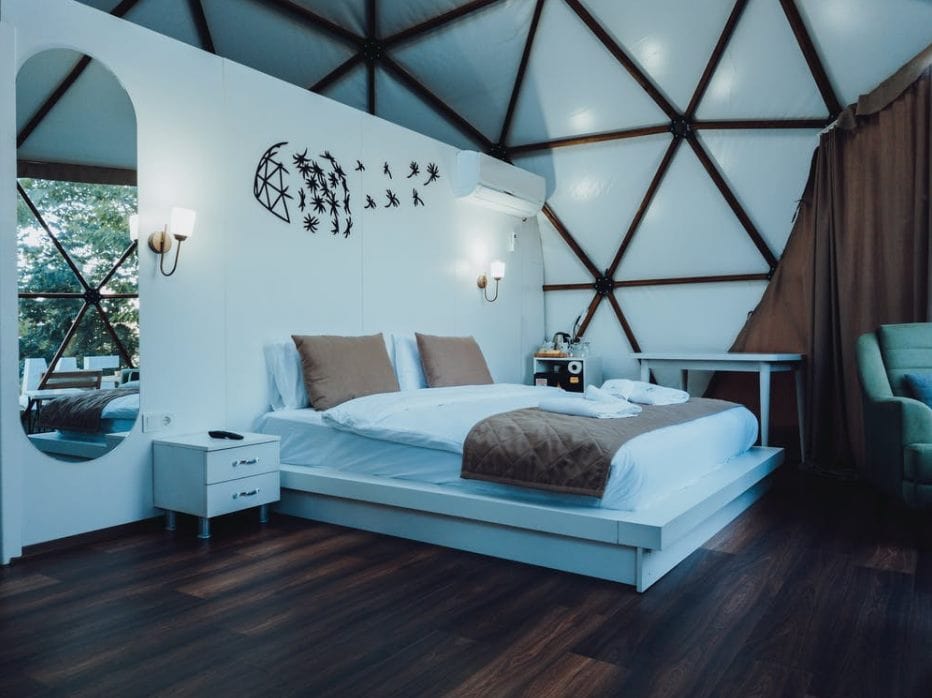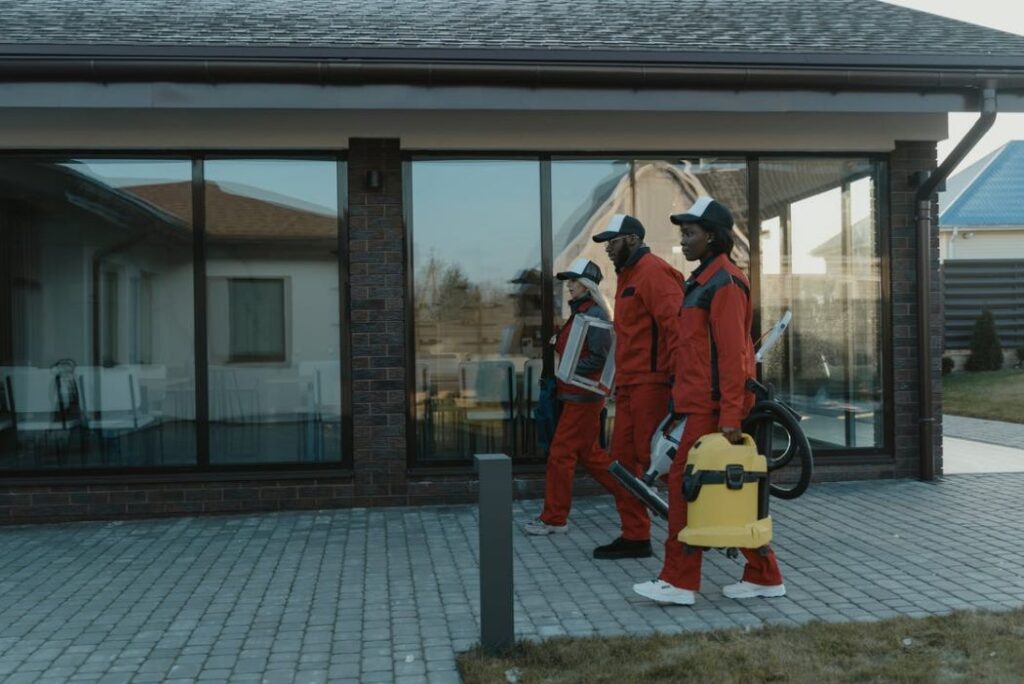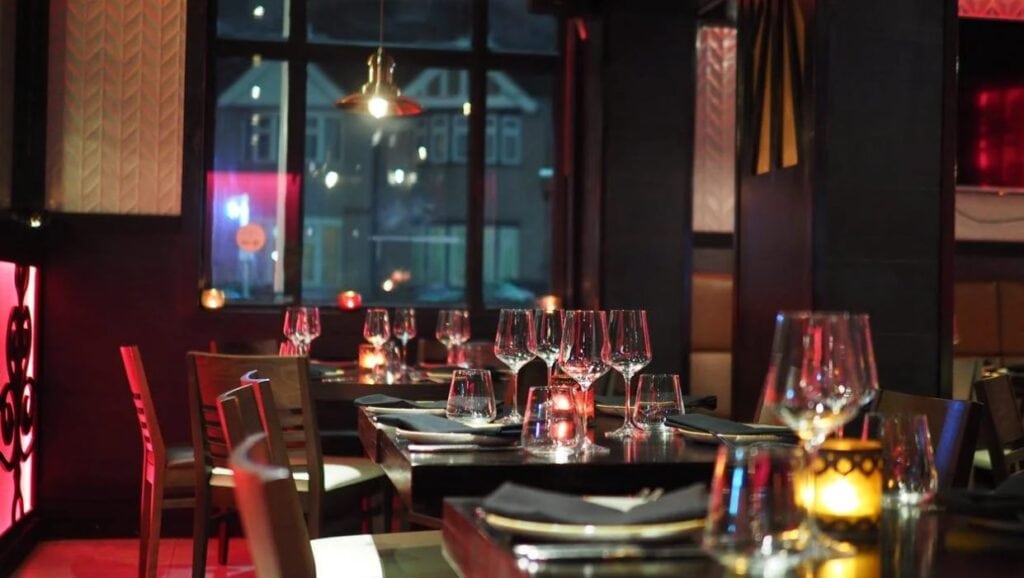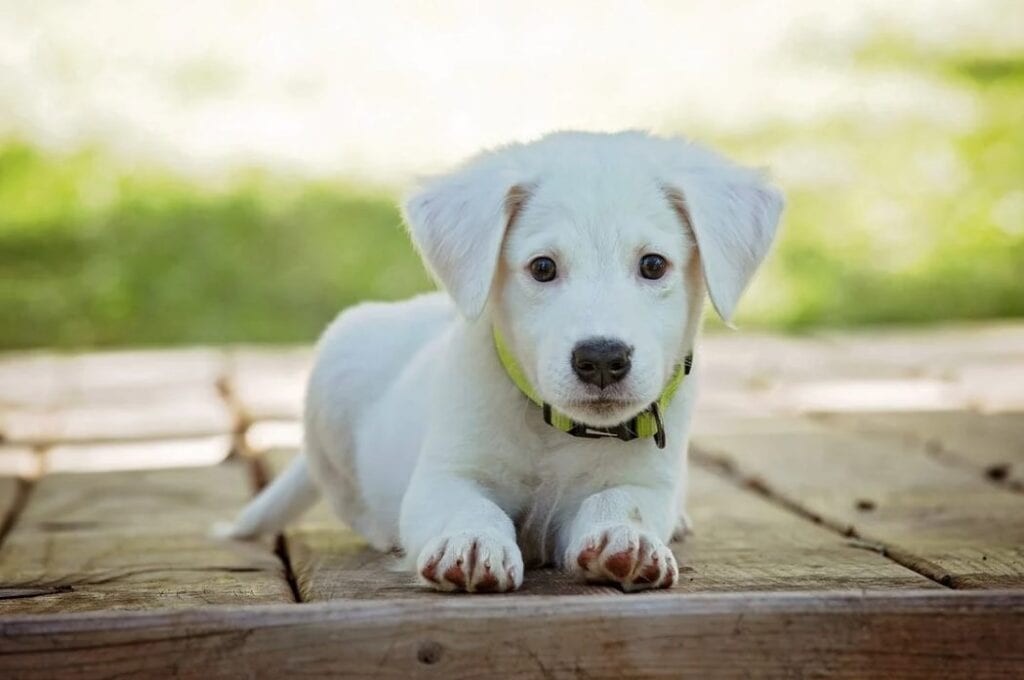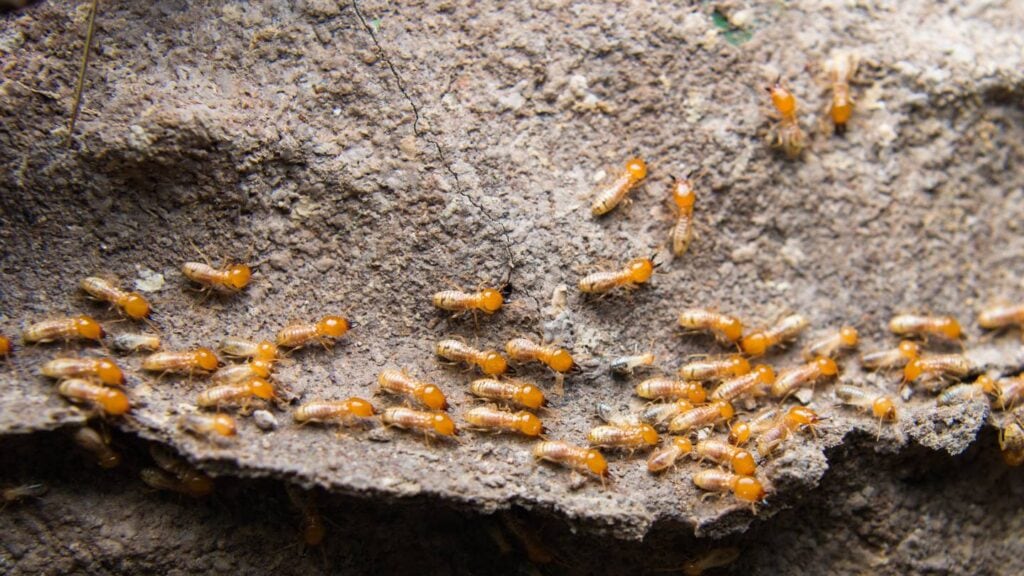Get everything you need about pest management and more from this exhaustive article. Asking yourself, "What are some natural predators of bees and wasps that can help with control?" is something you might have done before. In addition to being an essential component of many ecosystems, bees and wasps may be a nuisance when their numbers explode.
Several species naturally check the ever-increasing populations of bees and wasps in the complex web of nature. Among these, honey badgers stand out due to their courageous and dogged nature. The nimble bee-eater is only one of many birds that display their skill by feasting on these insects.
In addition, some spider species help maintain this equilibrium in nature by weaving elaborate webs and hunting covertly. These predators work in tandem to keep wasp and bee numbers in check, keeping the environment safe from harm.
Examining the realm of these organic exchanges provides an insight into the intricate equilibrium of the natural world. Our in-depth article explores the fascinating dynamics, tactics, and behaviours between these buzzing insects and their predators.
Readers are urged to go on a voyage of discovery using insights gleaned from top authorities in the area. As we explore the subtleties of this mutually beneficial connection based on the ageless dance of nature, please feel free to share your observations, ideas, and insights.
Why Bees And Wasps Are Important?
Wasps and bees, which are sometimes misunderstood and even feared, are essential to the health of our ecosystems. They play an essential role in ensuring human and environmental existence. A glimpse into the relevance of these buzzing beings is presented here:

Bees Are Essential To Pollination
Food Production:
Bees are the most crucial pollinators in the world. Pollinators, including bees, are essential for reproducing more than 75% of the world's blooming plants. The great majority of crops that people eat fall within this category. The availability and diversity of food would be much diminished if bees weren't there to pollinate these plants, as many of them wouldn't bear fruit or seeds.
Biodiversity:
Bees enhance ecosystem biodiversity by aiding in the reproduction of many plant species. Because of this, many different kinds of animals can survive, as these plants provide food and shelter.
Economic Impact:
The fertilisation work that bees do is very valuable to the economy. Bees are important for pollinating many crops, like nuts, apples, blueberries, etc. It is thought that bees' fertilisation services are worth hundreds of billions of dollars yearly to the world's economy.
Things That Eat Wasps: What Preys on Wasps?
The stinging insect group known as wasps belongs to Hymenoptera, specifically the suborder Apocrita. Wasps are physically and behaviorally distinct from bees and Apocrita ants, particularly with their narrow, hairless legs and smooth, slim bodies.
Because their stingers aren't particularly sharp and may be easily extracted from their victims, wasps are often parasitic or predatory. In contrast to bees, wasps can bite multiple times before they die, allowing them to launch multiple attacks.
Usually returning to their nests around sunset, they're busiest during the day. When colonies are foraging for food to feed the queen for winter, typically in the late summer and early fall, these pests are seen flying around. As they fly about looking for food, wasps encounter several threats, the most dangerous of which are predators that prey on them.
What Do Wasps Eat?
Wasps are eaten by insects such as praying mantis, beetles, centipedes, dragonflies, hoverflies, spiders, and moths. Wasps consume other insects and various plant-based diets, making them omnivores. They are nonetheless preyed upon by numerous species despite having venomous stingers, including:
- Birds
- Reptiles
- Insects
- Mammals
- Invertebrates
- Amphibians
The problem is that their vivid colours attract predators and make them easy prey. There are two main types of wasps: solitary wasps, who live independently, and social wasps, which dwell in colonies. Although they share a common ancestor with bees, these stinging insects are aggressive and excellent pollinators. The most common wasps are paper wasps, yellow jackets, and hornets. For a full rundown of the many wasp-eating animal species, see below.
Insects
Bugs like beetles, spiders, praying mantis, robber flies, centipedes, and hoverflies prey on wasps. Wasp hunting requires a unique set of skills that spiders possess. They use their webs to capture the insects, which they consume gradually. Robber flies paralyse wasps with their venom before devouring them. The fact that they capture these wasps while in flight is rather remarkable.
Dragonflies catch and devour wasps using a variety of techniques. Laying low, they watch their prey as it floats or swims by. As soon as they pass this stage, they swallow the wasps by shooting their lower jaws out. When it comes to adult dragonflies, though, their hunting technique is quite different. They eat their prey while flying with their mouths wide open.
A fierce predator, the praying mantis hunts and devours hornets. A mantis will pounce on a hornet as it flies by and use its long front legs to hold it in place. Its unfortunate predicament is that it feeds on hornet brains after peeling their heads.
Birds
Many birds prey on wasps, with the mud dauber and other solitary wasps being their primary targets. The wasps of this species are usually calm and won't sting too often. In addition, they don't fight back when threatened, so their predators can eat them without resistance.
Warblers, orioles, chipping sparrows, grey catbirds, bluebirds, chickadees, blackbirds, and many other birds consume wasps. But when it's time to lay eggs, they return to what they normally eat, which includes fruits, nuts, berries, insects, fish, and tree sap.
Mammals
Wasps are a staple food for many mammals, including honey badgers, mice, weasels, and black bears. Honey badgers are carnivores; when they go on a wasp-hunting binge in the summer, you can find comb fragments and other hunting-related debris all over the forest. In addition, throughout the summer, black bears, similar to honey badgers, search their nests for wasps' larvae, which they then consume.
Amphibians
Wasps and their larvae are a favourite food of amphibians, like frogs, salamanders, and toads. The fact that toads are immune to wasp stings means they can devour them without any problems. They catch these bugs and devour them without worrying about getting stung.
Eaters of Bees: What Eats Bees
Who Are The Worst Enemies Of Bees?
Birds
Crows, magpies, and starlings are among the bird species observed roosting in beehives and stealing honey and bees. Some birds seriously threaten honeybee colonies by preying on beehives and stealing their honey and bees. Crows, magpies, and starlings are the most frequent bird species that prey on beehives. Because of their opportunistic feeding behaviour, these birds will swoop down on honeybees and their hives if they find one.
Crows
Crows often invade beehives in quest of sweet nectar and buzzing bees. They are quite smart birds and have been seen using twigs and other tools to open beehives and get at the honey within. Pests like these can decimate bee populations by destroying hives and pilfering honey supplies. Crows can severely deplete a colony's resources by stealing and devouring bees.
Magpies
Honeybee colonies aren't the only ones vulnerable to magpies and other bird species. They can easily break into beehives and steal honey and bees because of their powerful beaks. A magpie's diet can include bee eggs and larvae, severely depleting a colony's resources.
Starlings
Starlings are not native to North America or Europe but have been seen stealing honey and bees from beehives. They have a strong beak that can easily split into groups that can damage the comb. Starlings are also known to eat bee eggs and larvae, reducing the number of bees in a colony.
These birds can damage beehive colonies, making it hard for the bees to stay alive and do well. Beekeepers must keep a close eye on these birds and take steps to control them so their colonies are safe.
How to Avoid Wasps and Bees?
Are wasps able to go into beehives? No, however, they will often test the defences of beehives to gain access, and then they will kill any bees they discover inside. Wasps hunt for and preserve dead animals for their larvae to consume; they prefer sweeter foods, such as bees, over sour ones, like beetles.
Keep Food in the Fridge or a Pantry Container That Won’t Let Air In.
Wasps and bees are naturally drawn to sweet substances and proteins. This attraction means that activities such as baking, which often result in the presence of sweet aromas and residues, can inadvertently invite these insects into one's living space. Even small amounts of sugary substances, like cake crumbs left on a kitchen bench, can attract a variety of pests, typically found outdoors.
To reduce the likelihood of bees and wasps establishing nests indoors, it is advisable to maintain a clutter-free environment. Regular decluttering of spaces can significantly diminish the chances of these insects finding suitable nesting spots within domestic settings.
Close Your Doors
It's great that there are screen doors. You can safely leave the larger ones open if a screen covers you to keep out bugs, animals, and the weather. If given the chance, wasps and bees will fly inside.
Nurture Your Garden.
Maintaining a nice lawn and clearing the area of trash and fallen fruit or veggies if you're growing your food will keep rodents and other pests away, like wasps and bees. Watch out for puddles and areas where water doesn't move.
Close The Lids On The Bins.
Only rats, roaches, bees and wasps regularly go into trash cans. Make sure the lids of both the inside and outside bins fit tightly and are locked or held by weight. This will ruin their fun. Is your trash can from the city a little too light? As a makeshift lock, put a rock on top of the lid. This will make the classic trash raid very hard for pests.
Natural Predators Help Control
The function of natural predators in preserving ecological harmony is of the utmost importance. In this way:
- Regulation of Prey Populations: There is a natural balance between predator and prey populations. Overgrazing, habitat loss, and possible extinction could result from the overpopulation of some species if predators don't exist.
- Disease Control: Weak members of a prey population are frequently the ones that predators focus on. Doing so contributes to a healthier population by reducing disease transmission among prey species.
- Promotion of Biodiversity: One-way predators help maintain ecosystem diversity is by preventing the dominance of any one species. This variety ensures the ecosystem's long-term health by making it more perturbation-resistant.
- Resource Distribution: Predators can control the actions and whereabouts of prey animals. To avoid over-harvesting particular plant species, herbivores may graze more slowly in regions with predators.

Methods for Preservation
- Creating Wildlife-Friendly Gardens: Gardeners can help local predators by growing native plant species, which offer food and cover. Their safety can be guaranteed by refraining from using chemicals.
- Avoiding the Use of Pesticides: As pesticides lower food supplies, predators and prey are negatively impacted. Reduce exposure to dangerous chemicals by adopting organic farming methods and implementing integrated pest management strategies.
- Educating Communities: Educating people about the value of predators can help them develop a deeper respect for these creatures. Communities can actively participate in conservation efforts by advocating cohabitation practices and emphasising their ecological roles.
Conclusion
This blog talks about animals that eat bees and wasps naturally. These animals are important for the health of ecosystems and for our survival as humans and as animals. Pollination, food supply, biodiversity, and the economy all depend on bees and wasps.
Over 75% of the world's flowering plants depend on bees to reproduce. These plants provide food and protection for many animals. Bees also increase the variety of life in an environment by helping many plant species reproduce, which in turn helps many animal species stay alive.
Wasps are biting insects in the suborder Apocrita of the Hymenoptera. Because their bodies are so thin, they often feed on other insects or take them as food. They can bite more than once before they die, which lets them attack more than once.
On the hunt for food in late summer and early fall, wasps can be seen flying around during the day. By looking at the relationships, strategies, and actions between these busy insects and the animals that eat them, readers can learn more about how the natural world works.
Additionally, wasps eat both animals and plants, which makes them omnivores. A lot of different animals, like birds, lizards, insects, mammals, invertebrates, and amphibians, eat them. Hawk wasps, yellow jackets, and paper wasps are the most common wasps. Wasps are violent and great at pollinating plants. There are two main types of wasps: solitary wasps, which live alone, and social wasps, which live in groups.
Birds, like praying mantises, robber flies, centipedes, and hoverflies, have special skills that they use to catch wasps. People who want to eat wasps don't have to worry about them fighting back because they are calm. Wasps are also eaten by warblers, orioles, chipping sparrows, grey catbirds, bluebirds, chickadees, and blackbirds.
Wasps are the main food source for mammals like honey badgers, mice, weasels, and black bears. Frogs, salamanders, and toads are examples of amphibians that can eat wasps without getting stung.
Besides being eaten by crocodiles, magpies, and starlings, bees are also eaten by other bees. Crows break into beehives to get sweet nectar and buzzing bees, stealing honey and damaging the combs. Their strong beaks make it easy for magpies to get into beehives and steal honey and bees.
Starlings, which are not native to North America or Europe, have been seen taking honey and bees from hives, which makes it hard for bees to stay alive. To keep their hives safe, beekeepers have to keep an eye on these birds and take steps to control them.
Bees and wasps can't get into beehives, but they can try to get in by showing that they are strong. They like sweeter things, like bees, better than sour ones. To keep them away, store food in a container that won't let air in the fridge or closet and keep your space clear.
Lock the doors and keep trash and smashed fruits and vegetables out of reach. To keep bugs out, keep bins securely closed and closed up. Natural predators are very important for keeping the ecosystem in balance because they control disease, keep prey numbers in check, encourage biodiversity, and share resources.
To protect these animals, make fields that wildlife can use, don't use pesticides, and teach people about their roles in the ecosystem. Native plants can be grown by gardeners who don't want to use chemicals and who follow organic farming methods. By teaching people about predators, we can help them respect them more and get more people involved in protection efforts.
Content Summary
- Honey badgers are known for their bravery and tenacity in controlling bee and wasp populations.
- Nimble bee-eaters are skilled bird predators of bees and wasps.
- Certain spider species contribute to maintaining ecological balance by preying on bees and wasps.
- Predators like honey badgers, birds, and spiders help keep bee and wasp numbers in check.
- Understanding the natural interactions between bees, wasps, and their predators offers insights into ecological balance.
- Bees and wasps, often misunderstood, play a crucial role in ecosystem health and human existence.
- Bees are the world's most important pollinators, vital for the reproduction of over 75% of blooming plants.
- The pollination by bees supports biodiversity and the survival of various animal species.
- Bee pollination services have significant economic value, estimated in hundreds of billions annually.
- Wasps, belonging to Hymenoptera, differ from bees in physical and behavioural aspects.
- Wasps' stingers allow them to be parasitic or predatory and sting multiple times.
- During their most active periods, wasps face various predators.
- Wasps' diet includes insects and plants, classifying them as omnivores.
- Birds, reptiles, mammals, invertebrates, and amphibians prey on wasps.
- Wasps' bright colours make them easily identifiable and vulnerable to predators.
- Wasps exist as solitary or social species and are effective pollinators.
- Common wasp species include paper wasps, yellow jackets, and hornets.
- Beetles, spiders, praying mantis, and other insects are natural predators of wasps.
- Spiders use webs to capture and consume wasps.
- Robber flies exhibit remarkable aerial skills in hunting wasps.
- Dragonflies employ unique hunting tactics to catch and eat wasps.
- Praying mantis predation includes feeding on hornet brains.
- Birds like warblers, orioles, and chickadees prey on wasps.
- Mammals such as honey badgers, mice, and bears include wasps in their diet.
- Amphibians like frogs and toads feed on wasps, unaffected by their stings.
- Birds such as crows, magpies, and starlings pose threats to bee colonies.
- Crows use tools to access beehives and steal honey and bees.
- Magpies' strong beaks enable them to break into beehives and deplete resources.
- Starlings, though not native, also prey on beehives in North America and Europe.
- Beekeepers need to protect their colonies from bird predation.
- Wasps attempt to infiltrate beehives but are usually repelled by bees.
- Wasps prefer sweeter foods like bees over sour ones like beetles.
- Keeping food in sealed containers helps avoid attracting bees and wasps.
- Reducing clutter and maintaining cleanliness deters bees and wasps from nesting indoors.
- Using screen doors can prevent bees and wasps from entering homes.
- A well-maintained garden reduces the likelihood of attracting bees and wasps.
- Properly securing bin lids helps prevent infestations of bees, wasps, and other pests.
- The ecological role of natural predators is crucial in maintaining balance.
- Predators regulate prey populations, preventing overpopulation and its consequences.
- Predatory activities contribute to disease control in prey populations.
- The presence of predators promotes biodiversity and ecosystem resilience.
- Predators influence the behaviour and distribution of prey animals.
- Creating wildlife-friendly gardens supports local predator populations.
- Avoiding pesticides benefits both predators and their prey.
- Community education on the importance of predators fosters respect and conservation efforts.
- Insects like beetles, spiders, and praying mantis hunt wasps using unique techniques.
- Many mammals, including black bears, rely on wasps as a food source.
- Wasps' venomous stingers do not deter various animal species from preying on them.
- Protecting beehives from predatory birds is a significant concern for beekeepers.
- The intricate relationships between bees, wasps, and their natural predators highlight the complexity of nature's balance.
Frequently Asked Questions
Various animals serve as natural predators to bees and wasps. Some common predators include birds like the bee-eater, certain species of spiders, and other insects such as dragonflies and mantises. These predators help control the bee population and wasps in the ecosystem.
Birds like the bee-eater primarily feed on bees, wasps, and other flying insects. By consuming these insects, they help regulate their populations. The bee-eater is known for its specialised hunting technique, where it catches bees and wasps mid-air, making it an effective natural predator in controlling their numbers.
Yes, certain species of spiders are predators of bees and wasps. These spiders capture bees and wasps in their webs or hunt them directly. By preying on these insects, spiders contribute to the natural control of bee and wasp populations in various ecosystems.
Dragonflies are known to be voracious predators of flying insects, including bees and wasps. Their agile flight and sharp hunting skills effectively capture and consume these pests. Thus, dragonflies are beneficial in managing bee and wasp populations in nature.
Mantises are predatory insects that feed on insects, including bees and wasps. Their ambush hunting style and powerful forelegs enable them to catch and consume these flying pests. By actively preying on bees and wasps, mantises help maintain a balance in their populations within the ecosystem.



